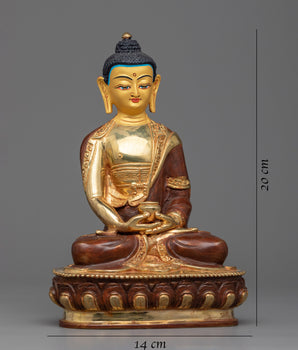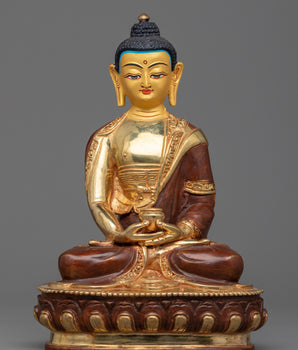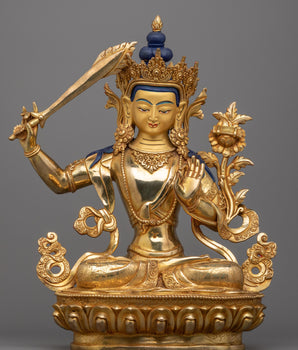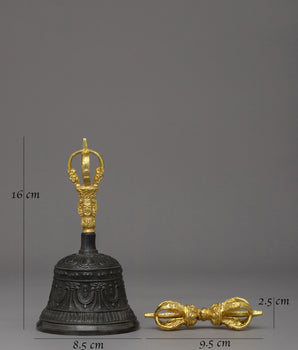









Antique-Finished Vajrasattva Spiritual Statue | Handcrafted Buddhist Art

100% AUTHENTIC

HANDMADE

FREE SHIPPING
3.3” Oxidized Copper Antique Finish Vajrasattva for Dharma Decor
----------------------------------------------------
Size: 3.3”/8.5cm (Height) x 3.1”/8cm (Base)
Weight: 0.202 kg
Material: Oxidized Copper Body, Antique Finish
----------------------------------------------------
About Our Statue:
This antique finish Vajrasattva Statue stands 3.3 inches. It is crafted of oxidized copper, ideal for meditation rooms, altars, or as a significant home decor piece, capturing the essence of Buddhist creativity.
Vajrasattva is represented in serene meditation, expressing purity and tranquility. He holds a vajra (thunderbolt) in his right hand at his heart, signifying unbreakable truth and compassion, and a bell on his left, lying on his hip. Representing. Knowledge and emptiness. Vajrasattva, adorned with jewels and a crown, embodies divine elegance and enlightened wisdom. His gentle smile indicates his role as a guide for spiritual rebirth and freedom from negative karma.
Vajrasatva is typically regarded as the second patriarch in the Shingon Buddhist lineage, preceded by Vairocana Buddha. According to Kukai's writings in the Record of the Dharma Transmission, Nagarjuna encountered Vajrasatva in an iron tower in southern India, as testified by Amoghavajra. As recounted in the Mahavairocana Sutra, Vajrasatve inducted Nagarjuna into the abhiseka ceremony and entrusted him with the esoteric teachings he had gained from Vairocana Buddha. Kukai doesn't provide detailed information on Vajrasatva or his origins.
Introduction to Vajrasattva:
Vajrasattva is typically regarded as the second patriarch in the Shingon Buddhist lineage, preceded by Vairocana Buddha. According to Kukai's writings in the Record of the Dharma Transmission, Nagarjuna encountered Vajrasatva in an iron tower in southern India, as testified by Amoghavajra. As recounted in the Mahavairocana Sutra, Vajrasatva inducted Nagarjuna into the abhiseka ceremony and entrusted him with the esoteric teachings he had gained from Vairocana Buddha. Kukai doesn't provide detailed information on Vajrasatva or his origins.
How do you take care of your statues?
• Place them at room temperature, avoiding direct sunlight.
• Make sure that the area where your statue is placed is entirely free of moisture and dust.
• Place it at the highest place on your altar after being consecrated by a Lama/monks. The best practice is to keep them covered inside a glass cabinet.
• Do not use your bare hands or any objects with a rough surface to wipe the face. Directly touching objects with the bare hand can smudge the face, leaving scratches.




















